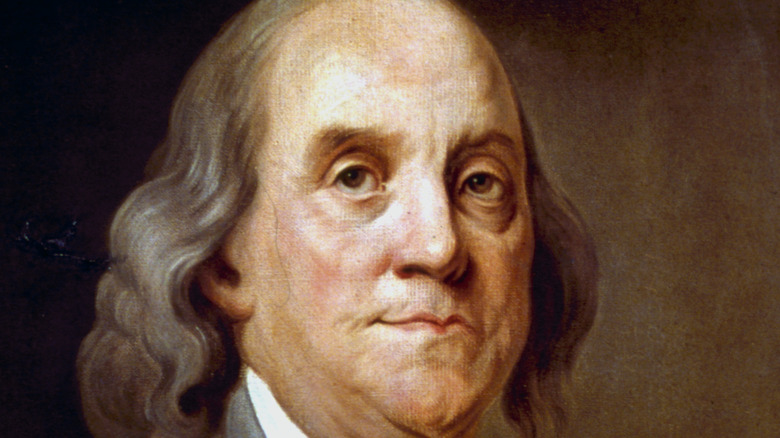The Real Reason Benjamin Franklin Invented The Lightning Rod
American statesman and inventor Benjamin Franklin has been associated with electricity for centuries. Thanks to a misunderstanding, a legend about him claims that he "discovered" electricity when he flew a kite, with a key attached, in a lightning storm. In fact, according to Wonderopolis, he did not discover electricity, as the scientific community had known about it for centuries before that. What the experiment did prove, however, was that lightning was and is a form of electrical discharge. Franklin also set a bad precedent with that experiment, in that flying a kite into lightning with a bit of metal attached is an extremely unsafe thing to do that should never be attempted by anyone.
Building on the knowledge he gained from his key experiment, Franklin was then able to come up with a simple method of redirecting the electricity from lightning away from places where it could create a hazard and safely into the ground. In the process, he probably saved lives and prevented incalculable property damage.
The lightning rod protects structures from fires
It goes without saying that lightning can be dangerous for humans, as people are struck and killed by the natural force every year. Yet, there is also a possible indirect consequence of lightning as well: a strike at the wrong place could ignite a fire. Considering the tightly-packed cities of wooden structures in which Europeans lived during Benjamin Franklin's time, lightning strikes could level parts of entire cities, according to How Stuff Works.
Since churches were generally the tallest structures in cities, and since lightning generally strikes the tallest object in the area, houses of worship were particularly susceptible to lightning strikes in the 18th century. Further, one Italian church held gunpowder in its basement, and a lightning strike ignited the powder, killing 3,000 people.
Franklin's invention, however, served to safely capture the charge from a lightning bolt and then, via a wire, safely direct it into the ground before it could do any damage. Franklin sent his invention back to France, where churches in the countryside first made use of it.

